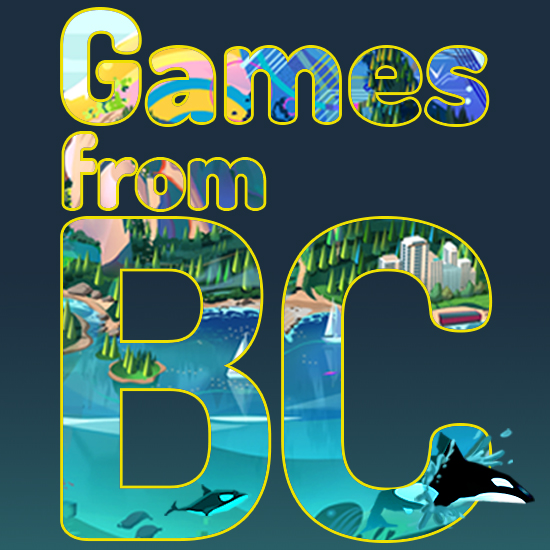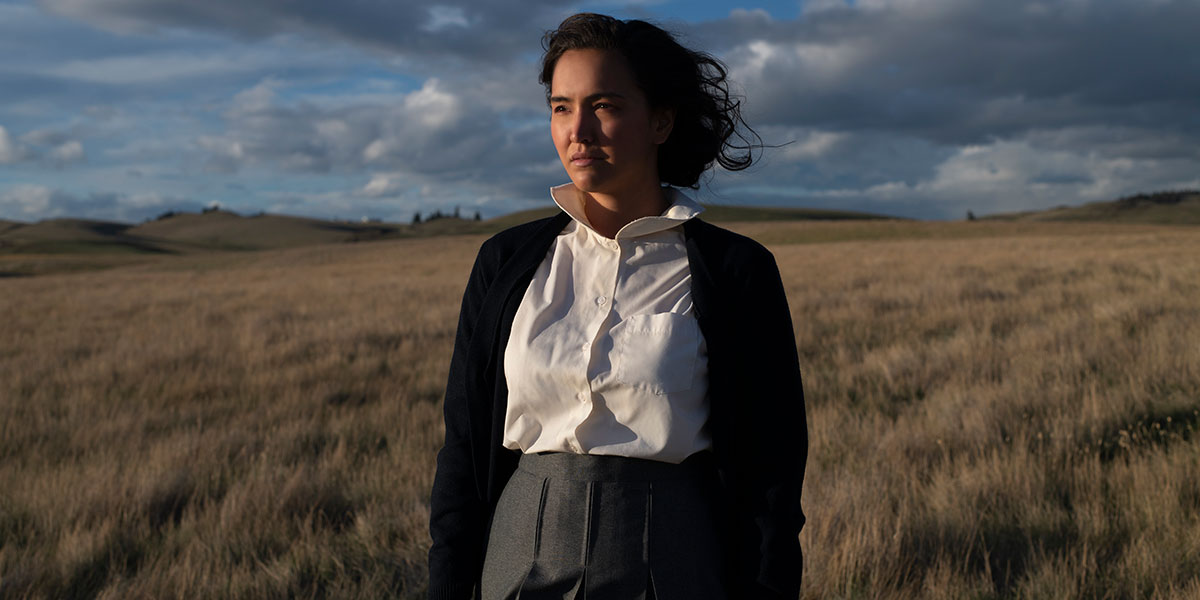Glitchhikers: The Spaces Between, released earlier this year, is about the thoughts that exist between destinations, the parts of journeys that dominate our time but not our attention, when our minds wander to parts of ourselves and our world normally left unexamined. On a late night highway drive, a quiet train car in the early hours, a walk through a moonlight park, or the endless wait in a deserted airport, we listen to weird music amid the ambient announcements of delays, and question our place in the universe.
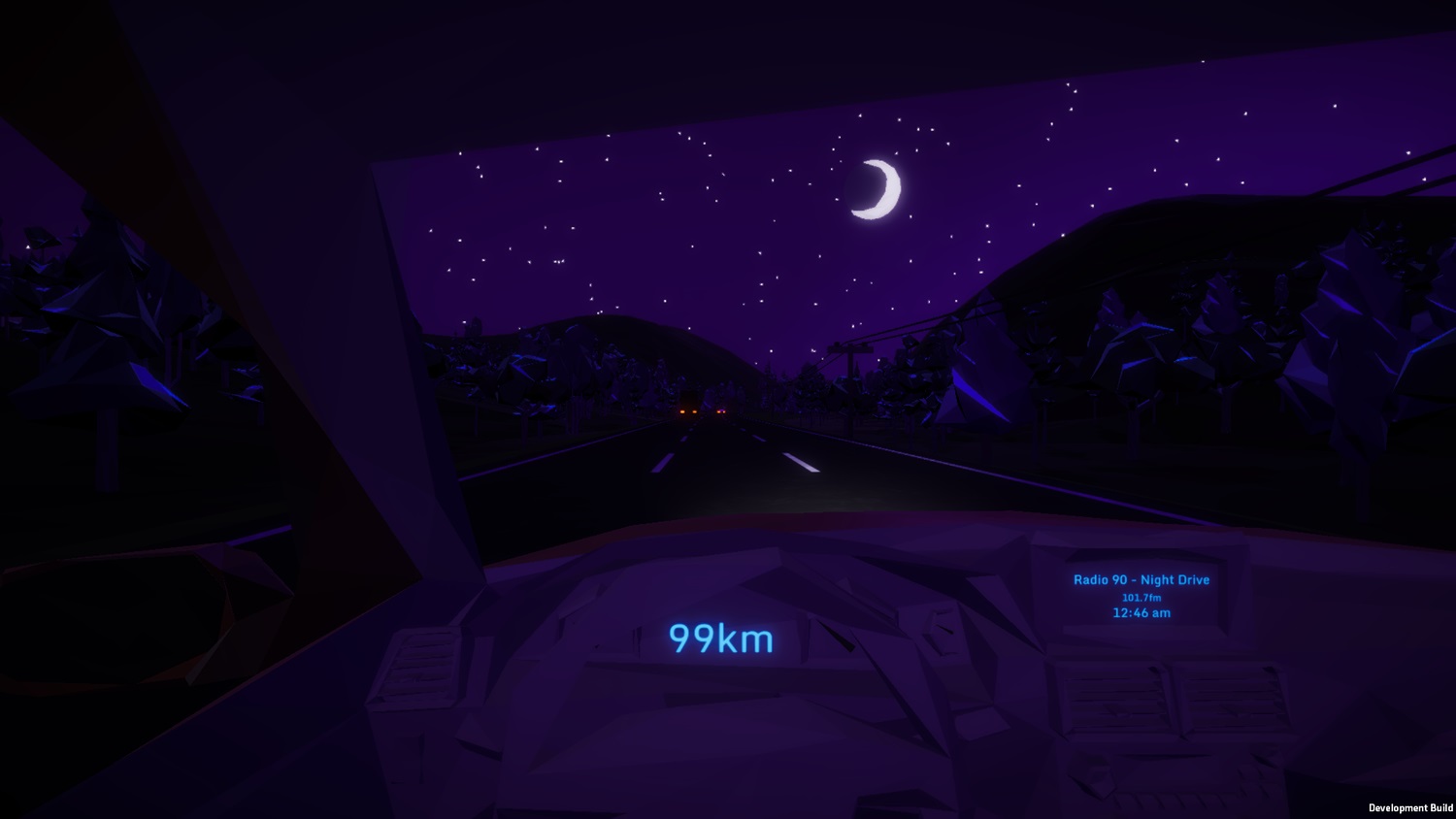
A follow-up to the critically praised short game released in 2014, Glitchhikers: The Spaces Between is an expanded experience, reborn and reimagined.
We connected with Lucas J.W. Johnson, Studio Director, and Claris Cyarron, Creative Director of the B.C. game and narrative design studio, Silverstring Media, behind Glitchhikers. Read our Q+A below.
Glitchhikers: The Spaces Between has been described as an introspective, narrative exploration game. It’s truly about the journey, with no destination in sight. How did you come to make a game like this?
Lucas: Back in 2014, Technical Director Phil (as ceMelusine), Creative Director Claris Cyarron, and myself all got together with the desire to make a game, and in discussing the kinds of arty, experimental, non-traditional kinds of games we were really interested in came to this idea of the experience of a long late-night drive. We’d each had similar but different experiences of that idea—Calgary to Vancouver, Vancouver to Seattle, or the long highways of eastern Texas—and became interested in exploring how one might replicate that very particular experience in a game.
We decided to go for a more universal kind of experience of the journey, rather than try to replicate a very specific journey or narrative (as other games like Kentucky Route 0 do). So we focused on the feeling of the late-night journey, with endless scenery, meandering introspective conversations, and weird music on the radio.
After that initial project, now titled “Glitchhikers: First Drive”, we wanted to expand the concept beyond the drive, to other types of liminal journey spaces: a train, an airport, a walk… And that became Glitchhikers: The Spaces Between.
You’ve both previously identified your work as queer and feminist, what can you tell me about finding space within the virtual world for introspective media?
Claris: First of all, I appreciate how you have framed this pursuit as being one of “finding space.” Partly because the concept of “holding space” for the player was such a big part of Glitchhikers’ development. With Glitchhikers, we wanted it to be chill, to be trippy, but also for it to be an invitation to slow down, to take the space and time to let your mind wander. Finally, through the conversations with the hikers in the game, we wanted to also extend an invitation to “try on” different perspectives and existential frameworks, engaging with your own beliefs with perhaps a bit more distance.
Games are objects of focus, and they are also *places* one can retreat to. They could just be entertainment objects, but often they are operating on more than just that level, encouraging players to engage and learn about the dynamics of a variety of systems. What the substance of those systems are, and the applicability of those learned dynamics to other parts of the player’s life, is another matter. It’s an extra challenge, but there is always an opportunity to find space within the game development process to place potent wisdom, or sculpt systems that teach valuable and transferable skills.
To take a step back, and also bring in the role of our queerness and feminism, it was important for us to have characters who talk about motherhood, queer identity, and queer relationships. We also added characters who talk about climate and social justice, bodily autonomy, abuse, disabilities, and mental health struggles. It’s worth acknowledging that our identities, principles, experiences and struggles will always influence our work, even when we are not so directly channelling them into our writing. But Lucas and I believe that making queer and feminist videogames is a radical philosphy moreso than simply an act of inclusion. A story isn’t queer simply by having a gay protagonist, but rather by challenging heteronormativity both narratively and structurally. A videogame isn’t made feminist by simply empowering women to fill the same claustrophobic and unhelpful power fantasies that men so often do, but rather by dissecting and dismantling patriarchy’s oppressive set of gendered rules and norms.
In the end, though, how we would approach including these ideas in a piece of interactive media will always depend on the game or piece of media in question. For Glitchhikers, from a structural standpoint it was about rejecting multiple-choice questions with only one right answer, pushing back against the productivity-obsessed need to always be engaged and generating value. Instead, it can be valuable to be still, to look at things with wonder but not with certainty, and to focus inward, considering one’s own values.
“an invitation to slow down, to take the space and time to let your mind wander.”
Lucas: As part of that, we also wanted the game to be accessible to as many people as possible, to be able to reach as many people as possible. It’s not the kind of game a lot of people might *seek out*, but it’s one we find a lot of people can connect with when they do engage with it—so first, as we mentioned, we tried to make it a *universal* kind of experience: not a specific car ride or walk in the park, but encapsulating the *idea* of those journeys.
But we also endeavoured to make it both physically and mentally accessible. There are a number of accessibility features in the game, such as the ability to adjust font sizes, change the control scheme (you could play it entirely with a single mouse with a few buttons), or put on subtitles, and the game has no dexterity challenges or time limits. We also included a slew of what we call “content consent features”: some of the conversations in the game can delve into dark topics, and while we’re not *depicting* those things, they could still be triggering or, at the very least, just not something a player cares to engage with on a particular day. We don’t want to *warn* people away from them, because maybe engaging with a conversation about grief is exactly what a grieving person might need, but we give the player a heads up, and give them some control over their experience.
That isn’t something that is right for every game—we shouldn’t be censoring or erasing important narratives—but it was right for the safe, calming, introspective experience we wanted Glitchhikers to be.
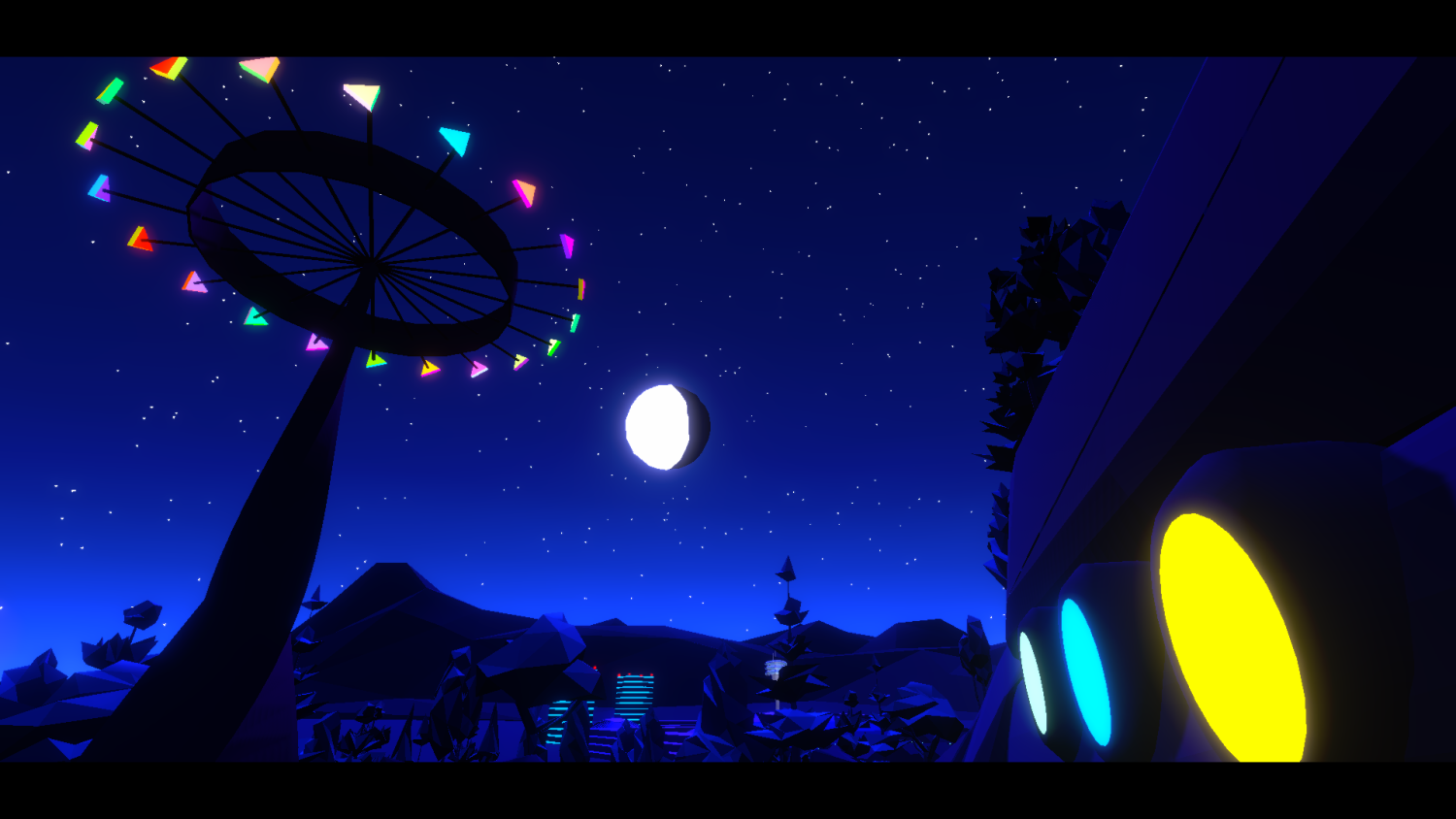
What’s it like making an indie video game in this day and age? Where do you see game and interactive media development headed, especially for smaller production houses?
Lucas: Well, with remote work and travel restrictions, it wasn’t until after Glitchhikers launched that we actually met half our team in person—so that’s certainly been an interesting challenge, developing lines of communication and pipelines to support the team and the creation of a project like this. We’re also a full decade past the indie game golden age—the ability to make games for small teams is arguably easier than ever, but that means hundreds of games get released every single day, and the challenge really becomes standing out in such a crowded marketplace.
Furthermore, especially as we see the labour issues happening all around the world, but also in the context of an industry that has historically been very bad to its workers, we think it’s extremely important to be able to pay and support every single person who works on our games. We reject the idea of the young creative living off scraps with the hope of making it big. And games can take a lot of people to make! So funding really becomes the biggest hurdle for us to not only make a project, but to try to create a sustainable business with long-term employment potential for our team.
Thankfully, there are organizations interested in supporting the kinds of experimental, arty, queer projects that we think are important. Not only Creative BC (thank you) and the Canada Media Fund, but also our wonderful publishers at Fellow Traveller, whose mission includes making sure that games like Glitchhikers have a chance to exist in the world.
For someone interested in making a video game or interactive media what advice would you have?
Claris: For many, an interest in making games is born first from an interest in playing them. Consequently, the careful and in-depth study of the games that you like is another common hallmark of a journey into game making. But I would add an equally imperative part of this task: develop the ability to *articulate* why the stuff you like is good, and why it works so well. This includes the new stuff you’re just encountering, not only your nostalgic favourites. Learn from good games criticism, and maybe even write your own. Don’t focus on the negative, or on projecting “impeccable taste”; those are the parts of criticism that won’t help you on a creative team. But the ability to trace a game’s theme and big ideas through all the details of its execution is a great way to build several core design skills while also building communication skills. A common (and age-old) follow-up question is “But where is the good games journalism?!” to which I would point you to the “This Week in Videogame Blogging” roundup on Critical Distance as a good place to start.
Making decisions about what career paths to pursue, which aspects of game development or media-making to specialize in, and which tools to purchase is too complex to get into here; though I will say that many free tools like Blender are very powerful and we use it at our studio. The most important thing is to find what works for you, and once you find ways to start making games, keep at it, and keep honing those skills.
The other thing I will say is that there are some great free, open-source game design resources out there, detailing the various sub-disciplines of game development. A good example would be “The Level Design Book,” which covers the “lost art” of level design, and also contexualizes it within games history and the larger process of game development.
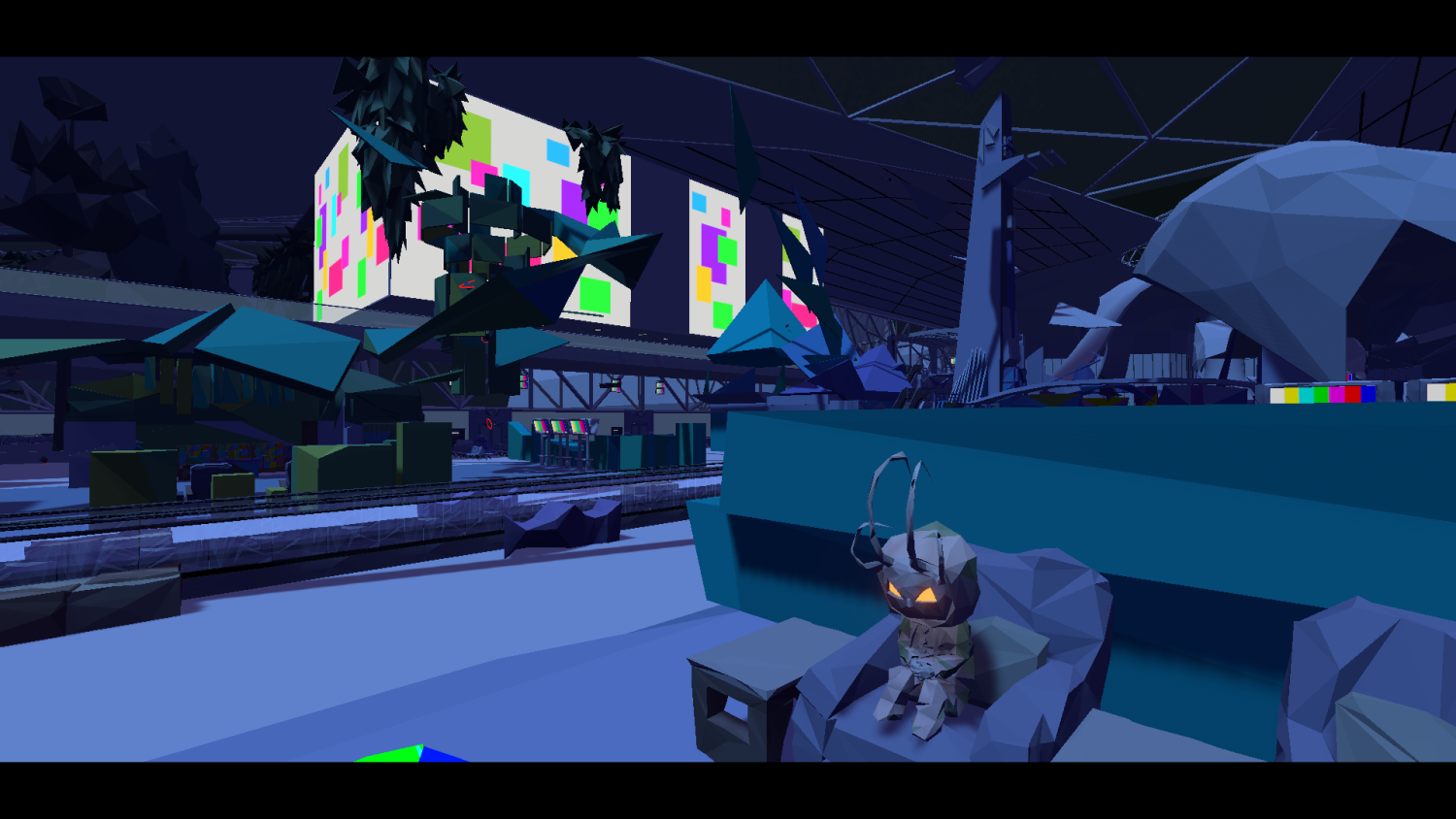
What’s next for you?
Lucas: We are thankful to have received some early funding to work on some new game concepts, which we’ve been prototyping this year. Then it’s off to the continued hunt for funding to hopefully turn them into full games, and to continue to support our growing team of amazing devs.
Claris: Throughout the process of making Glitchhikers: The Spaces Between, we have built a really fabulous and multi-disciplinary team. It’s been a joy to work closely with them on that game, and also on the prototypes we’ve been making this year. That prototyping process has also been refreshing, and allowed us all to experiment with new ways of working, and ultimately build new skills. It’s too early to talk about what we’ve put together, but we can say it will be a different kind of experience than Glitchhikers. In the immediate future, though, a few of us who are local to B.C. will be gathering together to go on a hike on one of B.C.’s beautiful trails.

